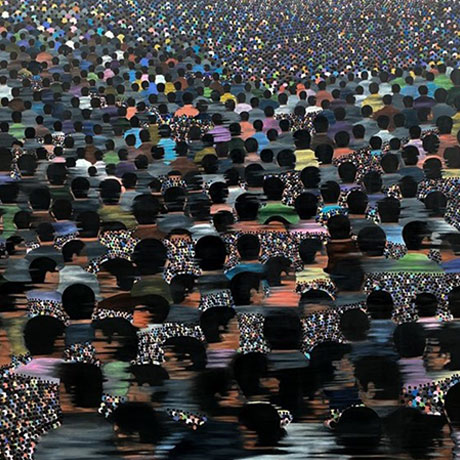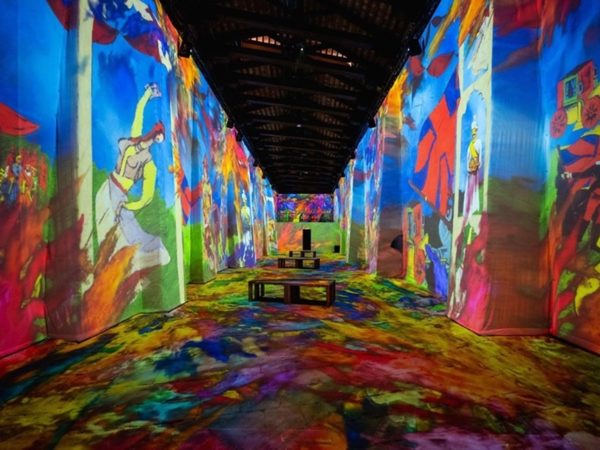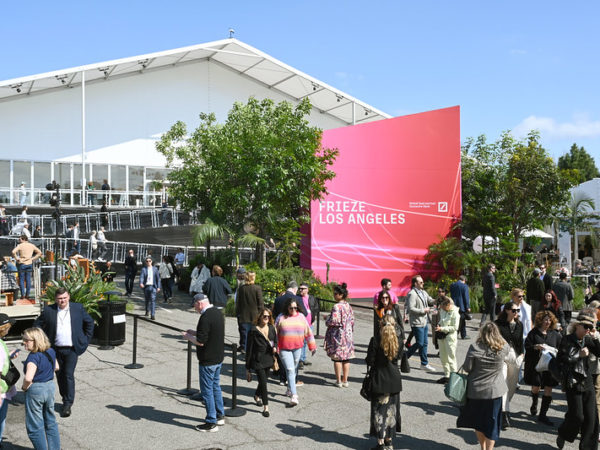THE PATTERNS OF CROWDS
A solo show of Mumbai-based artist Apurba Nandi where he presents his view of a contemporary artist’s thoughts on the ‘multitude’ and its ‘agency.’ On visiting Palette Art Gallery one observes the tentative gathering of art-going folks on the opening night of artist Apurba Nandi’s solo show ‘A Parade of Uncertain Destinations.’
There is something ironic and oddly unsettling about the surging patterns of crowds that Nandi has meticulously depicted on his acrylic on canvas works, given that it is a period between two waves of COVID 19 lockdowns, that saw urban spaces wear a completely deserted and ghostly air.
“I began this solo in 2019 and it took me three years to complete my works. During the lockdown I actually missed being witness to the crowds because it had become part of my everyday life,”
says the artist who moved to Mumbai from Vadodara Gujarat, after he finished his Masters in Sculpture at the Faculty of Fine Arts, M.S. University, Vadodara.
“When I came to Mumbai, I would watch people moving in all directions; people going somewhere or no- where. I was intrigued by this landscape when I was in the process of being part of the city like Mumbai. I was waiting for Mumbai to absorb me,” says Nandi.
While he was in the process of waiting, he began to ‘look’ at the city and almost gained a sense of catharsis from this act. “I kept looking at people till they got reduced into a pattern of heads, pattern of hands, of eyes, of sound; the sound that becomes a common humming,” says Nandi. Which is why on many levels we do not see an ‘individual’, we do not see class, religion, caste or even gender represented in his work.
“My daughter did ask me why there were no women in my crowds, and my answer to her and others who ask this question is that in the majority of a crowd, there is often an absence of women…especially on the metro train where they are situated in a separate compartment altogether. It says something about us as a society,” says Nandi touching upon the very layered aspect of his work that is perhaps only slightly hinted at.
Was it disturbing, this urban chaos? Did it make him feel part of the city or did he feel disconnected from it? “Like many artists who come to live and work in big cities, I felt a sense of both. I was part of the crowds and yet there were many times when I was just an observer who was attempting to grasp the fleeting experience of the city,” says Nandi.
On closer examination of the crisscrossing masses, one does spot a few individuals, dressed in white tee-shirts. “The person dressed in a white tee-shirt is a symbol of peace, representing that moment in the hustling and bustling crowd when one feels a sense of quiet,” says Nandi.
“As his viewers, it becomes difficult for us to pinpoint the exactness of this particular geographic terrain or location. This visual phenomenon of collective bodies huddled together and moving from all directions could be part of the urban life of Mumbai, Shanghai, New York, Sao Paulo or anywhere else in the world. It could be a repetitive daily experience from any of these places,” observes writer-curator and translator Premjish Achari, who has written the text for Nandi’s e-catalogue.
There is something comforting yet unsettling about the idea of the generic urban being, who is part of a crowd, since it strips away the idea of the individual giving birth to the notion that at the end of the day we are all just human beings, all engaged in the ‘perennial tussle of power.’
On till 11 September 2021 at Palette Art Gallery.
View the show online http://paletteartgallery.com/exhibition/future/works/details/6574
Text by Georgina Maddox
Image Courtesy: Palette Art Gallery and Apurba Nandi
Find more about the exhibition, artist and artworks:
http://www.paletteartgallery.com/profile/apurba-nandi
https://indiaartfair.in/programme/a-parade-of-uncertain-destinations-apurba-nandi-2
http://www.paletteartgallery.com/artists-list/artist-info/artist-works/5918









